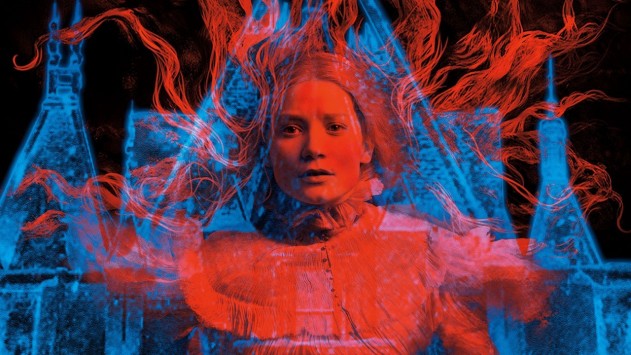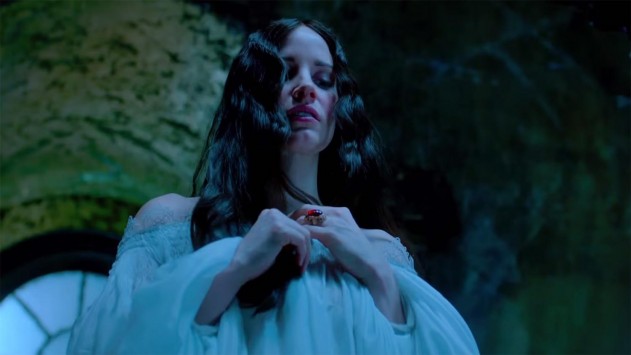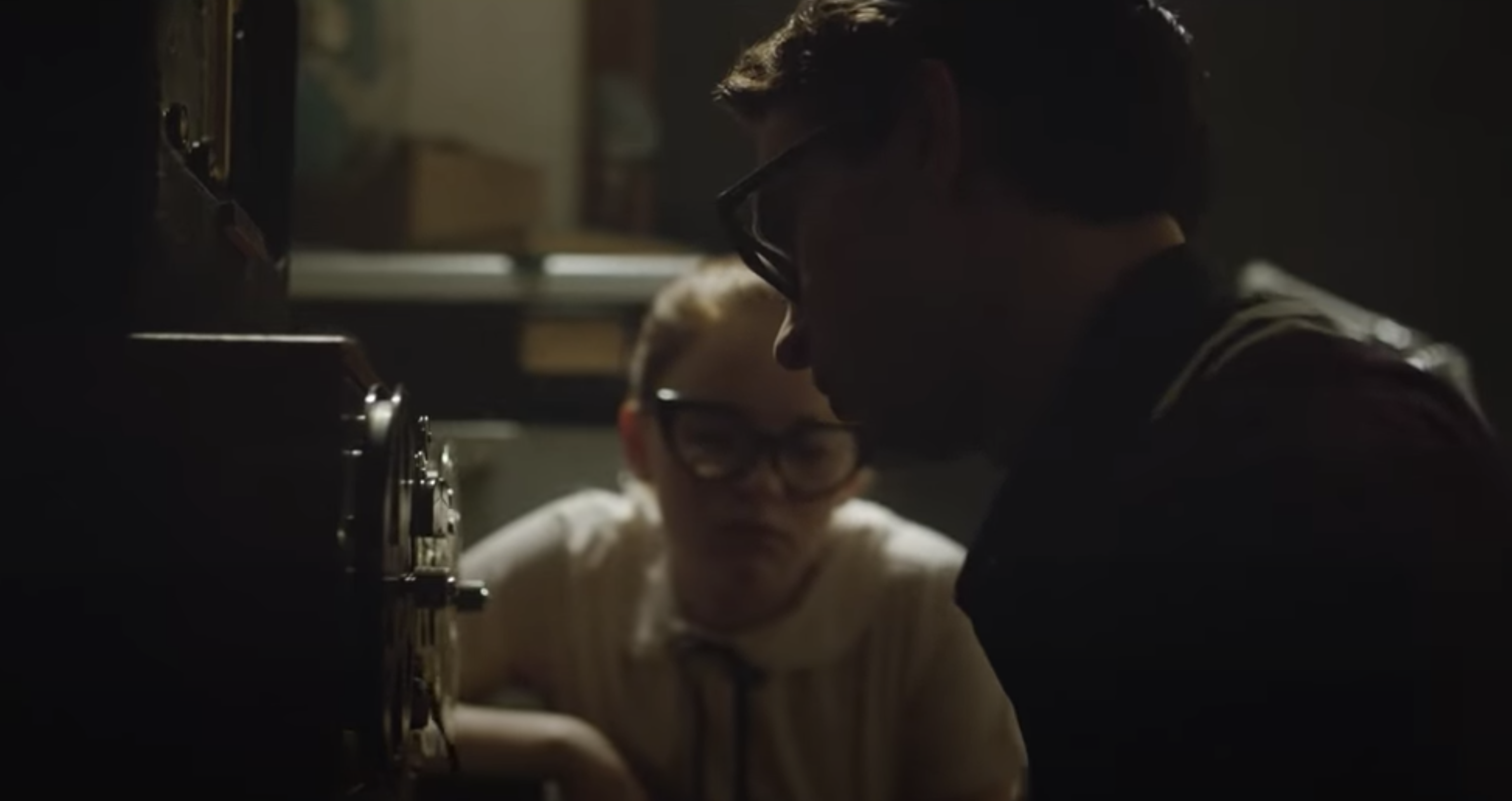Crimson Peak
“Ghosts are real. That much I know.” So begins Guillermo del Toro’s spellbinding dark fairy tale, CRIMSON PEAK. Set in the late 1900s it follows aspiring fiction writer Edith Cushing (Mia Wasikowska) as she falls for, and marries, a penniless, seductively handsome English Baronet, Sir Thomas Sharpe (Tom Hiddleston). Along with his older sister, Lucille (Jessica Chastain), Thomas brings Edith back from New York to England to live in a paradoxically enormous-yet-claustrophobic, coal-black mansion: Allerdale Hall (aka the “Crimson Peak” of the film’s title).
Isolated, slowly decaying, Crimson Peak is perched atop a mine of red clay that rises from the ground up, tainting the freshly fallen snow in blood, oozing out from under the wooden floors and spurting from the creaks in the walls. The mansion lives——it breathes, bleeds, creaks, and moans in a state of unrest——and harbors ghosts of a skeletal sort whom only Edith can see and who are the keepers of Crimson Peak’s darkest and vilest secrets.
[CRIMSON PEAK rated a respectable 68% on the Tomatometer]
The critical consensus is that del Toro should stick to horror filmmaking instead of trying his hand at Gothic Romance, that he’s failed with CRIMSON PEAK to breathe anything new into the latter genre other than CG ghosts, gore, and modern sensibilities. But if the past two decades have shown us anything, it’s that del Toro’s body of work speaks volumes of his ability to blend together, and innovate within, existing genres. Hardly an exception to this rule, CRIMSON PEAK is not only chilling, unsettling, and heartbreaking, but also an authentic tribute to both the golden age of Hollywood cinema and Gothic literature of the 1900s.
By way of CRIMSON PEAK’s riveting design, Edith’s wild imagination emerges as a key trait, one that she shares with such Gothic literary heroines as Catherine Morland in Jane Austen’s Northanger Abbey (whose fascination with the works of Ann Radcliffe bleeds into her own perception of reality). “It is not a ghost story,” says Edith to Thomas, “It is a story with ghosts in it. The ghosts are a metaphor for things of the past.” Such understanding of ghosts in a fictitious context enables Edith to make major discoveries upon her arrival at Crimson Peak, as she must inevitably communicate with those who haunt the mansion.
CRIMSON PEAK also bears traces of Charles Perrault’s French folktale, “La Barbe Bleue” (“Bluebeard”), namely when Edith is warned by Thomas never to take the mansion’s indoor elevator——which leads to its subterranean area——and when Lucille refuses to give her a set of keys to the mansion because some rooms are deemed unsafe. As in Perrault’s folktale Edith’s curiosity in CRIMSON PEAK is too strong; her disobedience, wandering into restricted areas of the mansion, places her in danger.
Edith’s vulnerability reminds of the “new” Mrs. de Winters in Daphne du Maurier’s “Rebecca” (later adapted by Alfred Hitchcock in his namesake classic), but del Toro’s reliance on this point of reference is in no way a handicap. Whereas in a great majority of fairy tales’ ‘good’ and ‘evil’ character dichotomies, the good are rewarded and the evil are punished, soon showing signs of redemption, CRIMSON PEAK’s most villainous characters are endeared throughout, even if never tipping over into ‘pure’ morality.
CRIMSON PEAK aptly questions whether or not you’d rather be living in the company of ghosts than humans. It reflects upon relationships and wonders how ‘monstrous’ love might make you or your significant other. And it might even make you yearn for a walk around your empty house, dressed in period drama fashion, holding a candelabra in pitch darkness——just because.
Produced by Legendary Pictures DDY. Distributed by Universal Pictures.
Alix Becq is Screen Comment’s contributing writer. She can be reached at @AlixBecq.
[jwplayer config=”Default-Post-Player” mediaid=”21800″]news via inbox
Nulla turp dis cursus. Integer liberos euismod pretium faucibua




